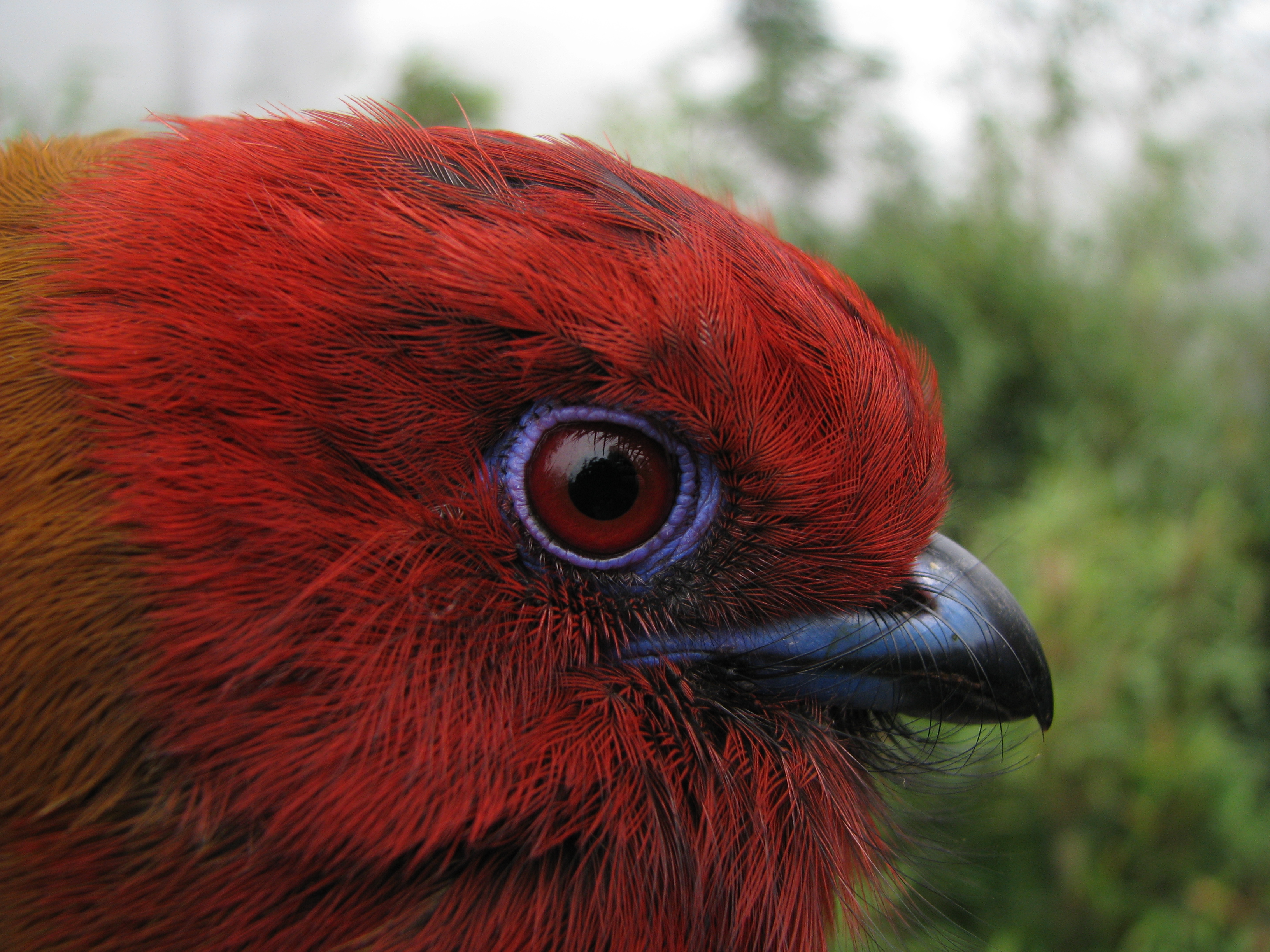|
Trogonidae
The trogons and quetzals are birds in the order Trogoniformes which contains only one family, the Trogonidae. The family Trogonidae contains 49 species in seven genera. The fossil record of the trogons dates back 49 million years to the Early Eocene. They might constitute a member of the basal radiation of the order Coraciiformes and order Passeriformes or be closely related to mousebirds and owls. The word ''trogon'' is Greek for "nibbling" and refers to the fact that these birds gnaw holes in trees to make their nests. Trogons are residents of tropical forests worldwide. The greatest diversity is in the Neotropics, where four genera, containing 34 species, occur. The genus '' Apaloderma'' contains the three African species. The genera '' Harpactes'' and ''Apalharpactes'', containing twelve species, are found in southeast Asia. They feed on insects and fruit, and their broad bills and weak legs reflect their diet and arboreal habits. Although their flight is fast, they are r ... [...More Info...] [...Related Items...] OR: [Wikipedia] [Google] [Baidu] |
Red-naped Trogon
The red-naped trogon (''Harpactes kasumba'') is a species of bird in the family Trogonidae. It is found in Brunei, Indonesia, Malaysia, and Thailand. Its natural habitat is subtropical or tropical moist lowland forests. It is threatened by habitat loss. Name in different languages * Latin - ''Harpactes kasumba'' * French – Couroucou a masque rouge * German – Rotnacken-Trogon * Spanish – Trogon kasumba * Dutch - Roodnektrogon Life history The red-naped trogon was discovered in 1822 by Sir Stamford Raffles, a military and British naturalist (1781-1826) best known for having founded Singapore in 1817. Morphology and flight The red-naped trogon is a strongly sexually dimorphic species, with the females generally being duller than the males. The male red-naped trogon is physically defined by a black head and upper breast, blue bill and eye ring with a bright blue coloured face. He has yellow-brown upperparts and upper tail with black outlines, a white breast-line, bright ... [...More Info...] [...Related Items...] OR: [Wikipedia] [Google] [Baidu] |
Euptilotis
The eared quetzal (''Euptilotis neoxenus''), also known as the eared trogon, is a near passerine bird in the trogon family, Trogonidae. It is native to streamside pine-oak forests and canyons in the Sierra Madre Occidental of Mexico from northern Sonora and Chihuahua south to western Michoacán. The species has occurred on rare occasions in southeastern Arizona, where it has been recorded nesting. Taxonomy The eared quetzal was described and illustrated in 1838 by the English ornithologist and bird artist John Gould in his book ''A Monograph of the Trogonidae, or Family of Trogons'' based on a specimen collected in Mexico. He coined the binomial name ''Trogon neoxenus''. In 1858, in the second edition of his book, Gould placed the species in its own genus ''Euptilotis'' to give the current binomial name ''Euptilotis neoxenus''. The eared quetzal is the only species placed in the genus. The specific epithet combines the Ancient Greek meaning "new" with meaning "stranger", " ... [...More Info...] [...Related Items...] OR: [Wikipedia] [Google] [Baidu] |
Quetzal
Quetzals () are strikingly colored birds in the trogon family. They are found in forests, especially in humid highlands, with the five species from the genus ''Pharomachrus'' being exclusively Neotropical, while a single species, the eared quetzal, ''Euptilotis neoxenus'', is found in Guatemala, sometimes in Mexico and very locally in the southernmost United States. In the highlands of the states of Sonora, Chihuahua, Sinaloa, Durango, Nayarit, Zacatecas, Jalisco, and Michoacán, the eared quetzal can be found from northwest to west-central Mexico. It is a Mesoamerican indigenous species, but some reports show that it occasionally travels and nests in southeastern Arizona and New Mexico in the United States. June to October is the mating season for eared quetzals. Quetzals are fairly large (all over long), slightly bigger than other trogon species.Restall, R. L., C. Rodner, & M. Lentino (2006). ''Birds of Northern South America.'' Christopher Helm. (vol. 1). (vol. 2).Ridgely, ... [...More Info...] [...Related Items...] OR: [Wikipedia] [Google] [Baidu] |
Red-headed Trogon
The red-headed trogon (''Harpactes erythrocephalus'') is a species of bird in the family Trogonidae. Etymology ''H. erythrocephalus'' comes from the Ancient Greek terms ἐρυθρός ''eruthros'' meaning red and κεφαλή, ''kephalē'' meaning head. Description The red-headed trogon is on average in length. The male has a red head and breast, a unique feature in the Trogon group. The female resembles the Diard's trogon without a speckled undertail. The head, neck and upper breast of an adult male is dull crimson. A narrow white band crosses the mid breast, underneath which the lower breast to abdomen is light red to pink. Pale red can be observed on the flanks whereas the wikt:mantle, mantle and back of the bird are rusty brown. The male perches on branches with the support of mauve-blue legs. Regarding wing colouration, the lesser and median wing coverts, secondary coverts, as well as outer webs of tertials and Flight feather#Secondaries, secondaries are vermiculated b ... [...More Info...] [...Related Items...] OR: [Wikipedia] [Google] [Baidu] |


